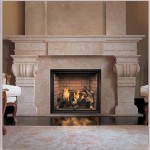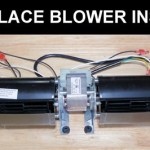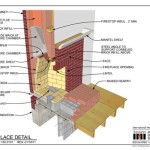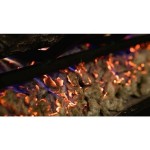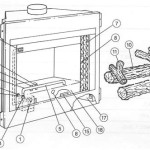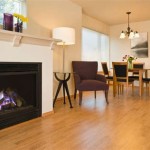Understanding Fireplace Repair Mortar: Types, Uses, and Application
Fireplace repair mortar is a specialized material designed to withstand the high-temperature environment of a fireplace. It's crucial for maintaining the structural integrity and safety of a fireplace by filling gaps, repairing cracks, and rebuilding deteriorated sections of the firebox, chimney, and surrounding masonry.
Selecting the appropriate type of fireplace repair mortar is critical for a successful and long-lasting repair. Various factors, including the extent of the damage, the materials being repaired, and the specific conditions the mortar will be exposed to, must be considered. This article will delve into the different types of fireplace repair mortar, their typical applications, and essential application techniques.
Types of Fireplace Repair Mortar
Several types of mortar are available for fireplace repair, each formulated to suit specific applications and temperature ranges. These mortars differ in composition, binding agents, and resulting properties.
Refractory Mortar: This is arguably the most common type of fireplace repair mortar. Refractory mortar is formulated to withstand extremely high temperatures, often exceeding 2000°F (1093°C). It is typically composed of heat-resistant aggregates, such as fireclay and alumina, and a high-temperature binder. Refractory mortar is ideal for repairing fireboxes, where direct flame contact is expected. It excels in situations requiring strong bonding and resistance to thermal shock, the rapid heating and cooling cycles that can cause other materials to crack and fail.
Water-Soluble Fireplace Mortar: This type of mortar is used to create a tight seal between the firebox and the flue liner. It's easier to work with than refractory mortar, but it's not as durable. Water-soluble mortar is typically used for smaller repairs and sealing. However, it is less resistant to high temperatures and moisture compared to refractory mortar, making it unsuitable for direct flame contact or areas prone to water exposure. Its primary advantage lies in its ease of application and cleanup. It's also easily removed for future repairs or modifications.
Hydraulic Cement: While not exclusively a fireplace repair mortar, hydraulic cement is a versatile option for certain applications. It sets and hardens through a chemical reaction with water, making it suitable for situations where moisture is present or expected. It exhibits excellent bonding properties and can withstand moderate temperatures. However, it's generally not recommended for areas directly exposed to flames, as it may not withstand the extreme heat of a firebox. Hydraulic cement is frequently used for repairing cracks in the chimney crown or sealing around the flue liner.
Key Considerations Before Applying Fireplace Repair Mortar
Proper preparation is crucial for ensuring the longevity and effectiveness of any fireplace repair. This includes thoroughly cleaning the surfaces, selecting the right type of mortar, and understanding the environmental conditions.
Surface Preparation: Before applying any mortar, the area must be thoroughly cleaned. Remove any loose or crumbling mortar, soot, dirt, and debris. A wire brush and chisel can be used to remove loose material effectively. The surface should be slightly dampened before applying the mortar to improve adhesion and prevent the mortar from drying out too quickly. Avoid saturating the surface, as excessive moisture can weaken the bond.
Mortar Selection: Choosing the appropriate type of mortar, as discussed in the previous section, is paramount. Consider the temperature the mortar will be exposed to, the type of material being repaired (firebrick, concrete, or other masonry), and the presence of moisture. Using the wrong type of mortar can lead to premature failure and further damage.
Environmental Conditions: Extreme temperatures can affect the curing process of the mortar. Avoid applying mortar in freezing temperatures or direct sunlight. The ideal temperature range will depend on the specific type of mortar being used, so always refer to the manufacturer's instructions. High humidity can also impact the curing time and strength of the mortar.
Applying Fireplace Repair Mortar: A Step-by-Step Guide
The application process for fireplace repair mortar typically involves mixing, applying, and curing. Following the manufacturer’s instructions precisely is essential for optimal results.
Mixing the Mortar: Carefully follow the manufacturer’s instructions for mixing the mortar with water. Use a clean container and mixing tool to prevent contamination. The ideal consistency is typically a thick, but workable paste. Avoid adding too much water, as this can weaken the mortar. Mix only the amount of mortar that can be used within the working time specified by the manufacturer.
Applying the Mortar: Use a trowel or other appropriate tool to apply the mortar to the prepared surface. Press the mortar firmly into the cracks or gaps to ensure good adhesion. For larger repairs, apply the mortar in multiple layers, allowing each layer to partially dry before applying the next. This will prevent the mortar from slumping or cracking. Smooth the surface of the mortar to create a seamless transition with the surrounding masonry. Remove any excess mortar while it is still wet.
Curing the Mortar: The curing process is critical for the mortar to achieve its full strength and durability. Follow the manufacturer’s instructions for curing time. The curing time can vary depending on the type of mortar, the temperature, and the humidity. Keep the area damp during the curing process to prevent the mortar from drying out too quickly. This can be achieved by lightly misting the surface with water periodically. Avoid using the fireplace until the mortar is fully cured.
By carefully selecting the correct type of fireplace repair mortar and following the proper application techniques, the structural integrity and safety of a fireplace can be effectively maintained.

Quikrete 10 Oz Fireplace Repair Mortar 862024 The Home Depot

Quikrete 10 Oz Fireplace Repair Mortar 862024 The Home Depot

Easily Solve These Common Chimney Repair Problems Chimneysaver

Repairing Mortar Joints Concord Carpenter

2000ºf Fireplace Mortar Rutland

Fireplace Mortar Buff Rodtech Usa

How To Fix Crumbling Chimney Mortar 13 Steps

How Can Cold Weather Impact Chimney Repairs Done During Winter

An Inexperienced Mason Can Cause Chimney Restoration Mistakes

Chimney Masonry Repair Tips Doctor Flue
Related Posts


